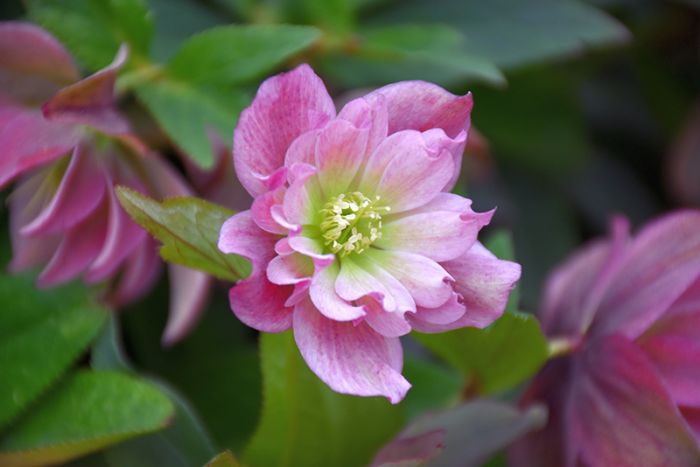Helleborus, Lenten Rose 'Wedding Party® Maid of Honor'



Out of stock
Coming soon, still growing- Sun Preference
- Part-Sun, No-Sun
- Bloom Time
- April, May
Description
The Hellebores are ‘gourmet’ evergreen perennials with glossy palmate leaves and large showy flowers of white, pink, lavender, rose, or purple in nodding clusters. Among the earliest spring bloomers, these plants require a careful setting in Minnesota. Best in shade to part shade protected from winter sun and winter wind. A very beautiful plant for woodland gardens. Species in general was the 2005 Perennial Plant of the Year.
Early spring bloomer produces double flowers in light to dark pink. The 2-3” flowers are produced in great abundance on mature plants.
Minnesota's Largest Selection of Perennials
Discover an unparalleled selection of perennials at Gertens! With the largest variety in Minnesota, we offer endless options of colorful perennials, natives, and pollinator plants to beautify your garden year after year. From vibrant flowers to lush foliage, our perennials are perfect for adding beauty and charm to your outdoor space. Visit Gertens today and see why we're known as Minnesota's Destination Garden Center!
Details
Maid Of Honor Hellebore | Helleborus 'Maid of Honor'
Plant Height: 18 inches
Flower Height: 24 inches
Spacing: 18 inches
Sunlight: partial shade to full shade
Hardiness Zone: 4a
Other Names: Lenten Rose, Winter Rose
Group/Class: Wedding Party Series
Description:
Large double blooms are rose pink with deep pink blush, speckling and purple overtones; one of the first flowers to come up in cool weather and what a beautiful harbinger they are; great in woodland gardens and on shaded slopes
Ornamental Features
Maid Of Honor Hellebore features showy nodding rose cup-shaped flowers with lavender overtones and hot pink spots at the ends of the stems from early to late spring. Its glossy oval compound leaves remain bluish-green in color throughout the year.
Landscape Attributes
Maid Of Honor Hellebore is an herbaceous evergreen perennial with an upright spreading habit of growth. Its medium texture blends into the garden, but can always be balanced by a couple of finer or coarser plants for an effective composition.
This is a relatively low maintenance plant, and should be cut back in late fall in preparation for winter. Deer don't particularly care for this plant and will usually leave it alone in favor of tastier treats. It has no significant negative characteristics.
Maid Of Honor Hellebore is recommended for the following landscape applications;
- Mass Planting
- Rock/Alpine Gardens
- Border Edging
- General Garden Use
- Naturalizing And Woodland Gardens
Planting & Growing
Maid Of Honor Hellebore will grow to be about 18 inches tall at maturity extending to 24 inches tall with the flowers, with a spread of 24 inches. When grown in masses or used as a bedding plant, individual plants should be spaced approximately 18 inches apart. Its foliage tends to remain dense right to the ground, not requiring facer plants in front. It grows at a medium rate, and under ideal conditions can be expected to live for approximately 5 years. As an evegreen perennial, this plant will typically keep its form and foliage year-round.
This plant does best in partial shade to shade. It does best in average to evenly moist conditions, but will not tolerate standing water. It is not particular as to soil pH, but grows best in rich soils. It is somewhat tolerant of urban pollution, and will benefit from being planted in a relatively sheltered location. This particular variety is an interspecific hybrid, and parts of it are known to be toxic to humans and animals, so care should be exercised in planting it around children and pets. It can be propagated by division; however, as a cultivated variety, be aware that it may be subject to certain restrictions or prohibitions on propagation.
More Information
| Common Family Name | Lenten Rose |
|---|---|
| Gerten Grown Plants | Gerten Grown Plants |
| Sun Preference | Part-Sun, No-Sun |
| Bloom Time | April, May |
| Mature Spread (Range) | 12" - 24" |
| Mature Height (Range) | 13" - 24" |
| USDA Hardiness Zone | 4, 5, 6, 7, 8, 9 |


